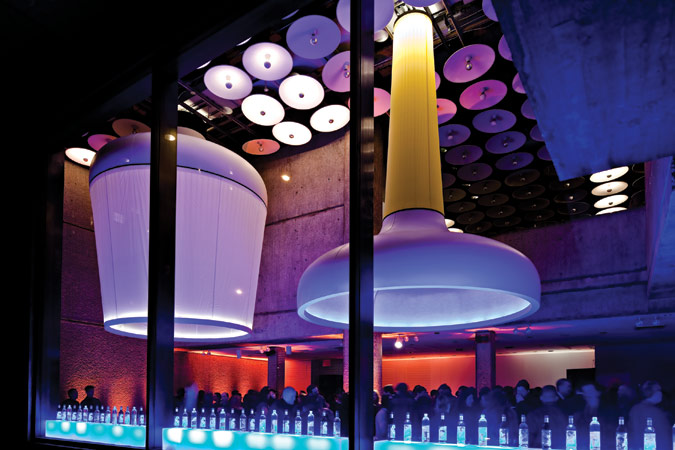
The Architectural League’s 30th annual Emerging Voices Award brings a focus to creative practices that will influence the direction of architecture. Each of the eight firms will deliver a lecture at the Cooper Union’s Rose Auditorium at 41 Cooper Square in Manhattan. The first lecture takes place on Friday, March 2 at 7:00 p.m. when 5468796 architecture and Inaba will present their work.
Inaba
Los Angeles
LA architect Jeffrey Inaba shuttles between small installations and gargantuan master plans, smoothly walking the increasingly tenuous line between art and architecture. Inaba studied at the Harvard Graduate School of Design before becoming a principal at Rem Koolhaas’ research studio AMO in 2000, where he learned, he said “to go about the creative process in a disciplined way.” He started his own office in 2004 and began directing Columbia’s C-Lab (Columbia Laboratory for Architectural Broadcasting) in 2005.
Along the way Inaba has developed an approach that uses economy and clarity to manage complicated problems, and, as he puts it, to translate “information into a visual language that can be understood.” In simplifying complexities the architect also minimizes costs, a priority that seems rare in the world of style-at-any-cost architecture.
|
A robot-made kiosk at the Festival of Ideas in New York City.
|
||
With an office staffed with about seven designers, Inaba is equally comfortable developing small projects like the Skylight, an installation for a new concert hall in Norway, and large ones like Figure 8, a master plan for 45,000 housing units in St. Petersburg, Russia.
The former, commissioned by the nonprofit group Public Art Norway, is a 26-foot-diameter, 43-foot-tall, 7-ton structure that will hang from the top of the hall’s five-story lobby. Clad with translucent exterior panels, it will project changing LED light patterns to match seasons, shows, and other variables. While the sculpture’s form appears elaborate, it was generated by efficiently trimming a simple cylinder.
The St. Petersburg housing project, while never built, offered a new housing paradigm that will save time and money by removing all east-west roads and focusing circulation on a figure-eight loop. Roadways, pointed out Inaba, usually account for about a third of the costs at housing projects.
|
A waterfront master plan for a sea-level city near Seoul.
|
||
“Our goal is to continue to work at a number of scales,” said Inaba, without ever losing sight of opportunities to maximize efficiencies.
Recently Inaba took on a waterfront master plan for Saemangeum, a tidal flat near the Korean city of Gunsan, near Seoul, where he recommended new perimeter waterways around the planned buildings that could be used for cooling as well as hydroelectricity. At about the same time he signed on to design a kiosk for last year’s Festival of Ideas for the New City at the New Museum in New York. The kiosk was built using robot labor, lowering costs while fostering interesting sculptural forms. The hanging pieces for Inaba’s pop-up cafe at the 2010 Whitney Biennial were fabricated using one single mold.
What’s next could be anything: “We are looking for commissions that give us the most opportunity to develop form with content, which might be a public art work, master plan, building, or iPad app,” the architect said.